Did you know that potatoes are the fourth most important food crop in the world, after wheat, rice, and maize? That’s right, these humble tubers have a significant global impact and play a vital role in feeding millions of people.
Potatoes are not just a staple in many households, but they are also incredibly versatile in the kitchen. From mashed potatoes to crispy fries, there’s a potato dish for every occasion and preference. Whether you’re a fan of the classic russet potato or you prefer the vibrant colors of purple and blue potatoes, there’s no shortage of potato varieties to explore.
In this ultimate guide to potatoes, we’ll delve into everything you need to know about this beloved vegetable. We’ll discuss the different types of potatoes, their nutritional benefits, how to grow them in your own garden or containers, and the best cooking techniques to bring out their flavors. By the end of this guide, you’ll be armed with the knowledge to become a potato aficionado.
Key Takeaways:
- Potatoes are the fourth most important food crop in the world, after wheat, rice, and maize.
- Potatoes come in a wide variety of types, colors, and flavors.
- They are a versatile and nutritious vegetable that can be enjoyed in many different dishes.
- You can grow your own potatoes in a garden or containers.
- Understanding the characteristics of different potato varieties can help you choose the right potato for your cooking needs.
Types of Potatoes: Starch Content and Best Uses
Potatoes offer a wide range of varieties, each with its own characteristics and best uses. Understanding the starch content of different potato types can help you choose the perfect spud for your favorite dishes.
There are three main categories of potatoes based on their starch content:
- Starchy Potatoes: High in starch, these potatoes are fluffy and absorbent. They are ideal for achieving a crispy texture on the outside while maintaining a light and airy interior. One popular example of a starchy potato is the Russet potato.
- Waxy Potatoes: Low in starch, waxy potatoes have a smooth and creamy texture. They hold their shape well, making them great for salads, soups, and dishes that require potatoes to maintain their form. Yellow potatoes are a popular variety known for their creamy texture.
- All-Purpose Potatoes: As the name suggests, these potatoes fall somewhere in between starchy and waxy varieties in terms of starch content. They offer a balance of fluffy and creamy textures, making them versatile for various cooking methods. Yukon Gold potatoes are a widely used all-purpose variety.
Grocery stores often categorize potatoes by type, including russet, yellow, white, purple or blue, red, fingerling, and new potatoes. Each variety has its own unique characteristics, allowing for diverse culinary creations.
Here is a table summarizing the starch content and best uses for different potato varieties:
| Potato Variety | Starch Content | Best Uses |
|---|---|---|
| Russet Potatoes | High | Perfect for fluffy mashed potatoes and crispy fries |
| Yellow Potatoes | Low | Ideal for creamy dishes and maintaining shape in salads |
| Yukon Gold Potatoes | Medium | Great for all-purpose cooking methods, including boiling, mashing, and roasting |
| Purple or Blue Potatoes | Medium | Retain their color and are suitable for various preparations |
| Red Potatoes | Low | Hold their shape well, making them ideal for potato salad |
| Fingerling Potatoes | Medium | Small and versatile, perfect for salads or roasting |
| New Potatoes | Low | Thin-skinned and best used within a few days of purchase |
By choosing the right potato variety based on its starch content and texture, you can elevate your culinary creations, whether you’re aiming for fluffy mashed potatoes, crispy potato wedges, or creamy potato-based dishes.
How to Grow Potatoes in Your Garden or Containers
When it comes to growing potatoes, you have two options: in-ground or in containers. Both methods have their advantages and can yield a bountiful harvest. Let’s explore the steps for successfully growing potatoes in your garden or containers.
Growing Potatoes In-Ground
If you choose to grow potatoes in-ground, follow these simple steps:
- Select a site with well-draining soil that receives at least six hours of sunlight each day.
- Prepare the soil by loosening it with a garden fork or tiller. Remove any weeds or rocks.
- Obtain seed potatoes, which are cut pieces of potatoes with buds. These can be purchased from garden centers or saved from your previous harvest.
- Plant the seed potatoes 3 inches deep and 6 to 12 inches apart, with the buds facing up.
- Water the potatoes once a week, providing enough moisture to keep the soil evenly moist.
- About four weeks after the sprouts emerge, apply a well-balanced vegetable fertilizer to promote healthy growth.
- Monitor the plants for pests and diseases like aphids and early blight, and take appropriate measures to control them.
- Harvest your potatoes when the foliage starts to yellow and die back. Carefully dig them up, being mindful not to damage the tubers.
- Store your harvested potatoes in a cool, dark location to prolong their freshness.
Growing Potatoes in Containers
If you have limited space or prefer to grow potatoes in containers, here’s what you need to do:
- Choose a container that is at least 15 gallons or larger, with drainage holes at the bottom.
- Fill the container with a well-draining potting soil mixed with vegetable fertilizer. Leave a few inches of space at the top.
- Place the seed potatoes on top of the soil, spacing them evenly.
- Cover the seed potatoes with soil, about 3 inches deep.
- Repeat the process of layering seed potatoes and soil until the container is filled, leaving about an inch of space from the top.
- Water the container thoroughly until the soil is evenly moist.
- Place the container in a sunny location, ensuring it receives at least six hours of sunlight daily.
- As the plants grow, continue to water them regularly to keep the soil moist.
- Monitor the plants for pests and diseases, and take appropriate measures to protect them.
- Harvest the potatoes when the foliage turns yellow and dies back. Carefully remove the tubers from the container.
Whether you choose to grow potatoes in-ground or in containers, proper care and maintenance are essential for a successful harvest. Keep an eye on the watering, fertilizing, and pest control needs of your potatoes to ensure healthy growth. Enjoy the satisfaction of digging up your own homegrown potatoes and savoring their fresh flavor in your favorite recipes.
The Nutritional Benefits of Potatoes
Potatoes are more than just a delicious and versatile vegetable. They also offer a range of important nutrients that can support a balanced diet and overall health. From potassium and vitamin C to vitamin B6 and essential minerals, potatoes pack quite a nutritional punch. Let’s take a closer look at the key nutrients found in potatoes.
Potassium: A Vital Mineral for Health
Potatoes are an excellent source of potassium, a mineral that plays a critical role in our body’s functioning. Potassium helps maintain proper heart and muscle function, regulates blood pressure, and supports healthy kidney function. In fact, potatoes contain even more potassium than bananas! Including potassium-rich foods like potatoes in your diet can help ensure you meet your daily potassium needs.
Vitamin C: An Immune-Boosting Antioxidant
Vitamin C is a powerful antioxidant that helps protect our cells from damage caused by harmful free radicals. It also plays a crucial role in supporting a strong immune system and promoting collagen production. While citrus fruits are often associated with high vitamin C content, potatoes are also a surprising source of this essential vitamin. Incorporating potatoes into your meals can help boost your vitamin C intake and support overall immune health.
Vitamin B6: Essential for Energy Metabolism
Vitamin B6, also known as pyridoxine, is involved in various important bodily functions, including energy metabolism, brain development, and the production of neurotransmitters. Potatoes are a good source of vitamin B6, which is necessary for the breakdown and utilization of carbohydrates, proteins, and fats. Including potatoes in your diet can help ensure you’re obtaining an adequate amount of this essential vitamin.
Rich in Essential Minerals
In addition to potassium, potatoes contain other essential minerals that support overall health. These include zinc, which is involved in immune function and wound healing, and iron, which is important for the production of red blood cells. By incorporating potatoes into your meals, you can provide your body with these important minerals, helping to maintain optimal health and well-being.
It’s important to note that the nutritional content of potatoes can vary slightly depending on the variety and cooking method. Nonetheless, potatoes are a nutritious vegetable that provides healthy carbohydrates, key vitamins, and essential minerals. So go ahead and include potatoes in your diet to enjoy their delicious taste and reap their nutritional benefits!
Cooking with Potatoes: Recipes and Tips
Potatoes are incredibly versatile and can be cooked in various ways. Whether you prefer them boiled, baked, roasted, steamed, grilled, or pan-fried, potatoes can be the star of a dish or a supporting ingredient. With their mild flavor and ability to absorb various seasonings, they can be easily incorporated into a wide range of recipes.
Here are some popular potato dishes that you can try:
- Mashed Potatoes: A classic comfort food, mashed potatoes are creamy and indulgent. Try this simple recipe:
| Ingredients: | Instructions: |
|---|---|
| – 4 large potatoes | 1. Peel the potatoes and cut them into chunks. |
| – 4 tablespoons butter | 2. Place the potato chunks in a large pot and cover them with water. Boil until the potatoes are fork-tender, then drain. |
| – 1/2 cup milk or cream | 3. Return the cooked potatoes to the pot. Add butter, milk or cream, salt, and pepper to taste. |
| – Salt and pepper to taste | 4. Mash the potatoes until smooth and creamy. |
| 5. Serve hot and enjoy! |
- French Fries: Crispy and addictive, french fries are a favorite side dish. Here’s a simple oven-baked recipe:
- Potato Salad: This refreshing salad is perfect for picnics or barbecues. Try this tangy version:
| Ingredients: | Instructions: |
|---|---|
| – 4 cups boiled potatoes, diced | 1. In a large bowl, combine the diced potatoes, chopped celery, diced red onion, and chopped fresh parsley. |
| – 1/2 cup mayonnaise | 2. In a separate small bowl, whisk together the mayonnaise, Dijon mustard, apple cider vinegar, salt, and pepper. |
| – 1/2 cup chopped celery | 3. Pour the dressing over the potato mixture and gently toss to combine. |
| – 1/4 cup diced red onion | 4. Taste and adjust the seasoning as needed. Refrigerate for at least 30 minutes before serving. |
| – 2 tablespoons chopped fresh parsley | 5. Serve chilled and enjoy! |
| – 2 teaspoons Dijon mustard | |
| – 1 teaspoon apple cider vinegar | |
| – Salt and pepper to taste |
- Roasted Potatoes: Crispy on the outside and tender on the inside, roasted potatoes are a delicious side dish. Try this simple recipe:
“Roasted potatoes are a crowd-pleasing side that pairs well with any main course. Simply toss bite-sized potato chunks with olive oil, salt, pepper, and your favorite herbs and spices. Spread them on a baking sheet and roast in a preheated oven at 425°F for 30-35 minutes, or until golden brown and crispy. Serve them hot and enjoy the crispy goodness!”
These are just a few examples of the many delightful potato dishes you can create. Experiment with different cooking methods, seasonings, and potato varieties to find your favorite combinations.
Stay tuned for more exciting potato recipes and tips in the next section!
Selecting and Storing Potatoes for Maximum Freshness
When it comes to selecting potatoes, it’s important to choose wisely to ensure maximum freshness and quality. Here are some tips to help you make the best choices:
- Look for potatoes with tight, unwrinkled skin. Avoid any potatoes with sprouts, green coloration, or soft spots. These can be signs of age or decay.
- If possible, opt for organic potatoes. They are grown without the use of synthetic pesticides and are generally fresher.
- Consider the variety of potato you need for your recipe. Different varieties have distinct flavors and textures, so make sure to pick the right one for the job.
Once you have selected your potatoes, proper storage is key to prolonging their freshness and preventing spoilage. Here are some guidelines to follow:
| Potato Variety | Storage Conditions |
|---|---|
| Mature Potatoes | Store in a dark, dry, and cool place like a basement or pantry. The ideal temperature for long-term storage is between 45°F and 50°F (7°C and 10°C). Humidity should be around 85% to prevent excessive drying. |
| New Potatoes | Eat within a few days of purchasing. New potatoes have a shorter shelf life compared to mature ones. |
Avoid storing potatoes in the refrigerator, as the cold temperature can cause the starches in the potatoes to convert to sugars, resulting in a sweeter taste and undesirable texture. Additionally, potatoes should not be stored near onions, as they release gases that can cause potatoes to spoil faster.
By following these guidelines for selecting and storing potatoes, you can ensure that your potatoes stay fresh and ready to be used in your favorite recipes.
Cooking with Different Potato Varieties: The Best Uses
Different potato varieties have unique characteristics that make them well-suited for specific cooking methods and dishes. Understanding these characteristics can help you enhance the flavors and textures of your favorite potato recipes. Here are some popular potato varieties and their best culinary uses:
Russet Potatoes
Russet potatoes are beloved for their high starch content, which gives them a fluffy texture when cooked. They are perfect for making classic mashed potatoes, crispy french fries, and fluffy baked potatoes. Their large size and thick skin make them ideal for withstanding high-heat cooking methods.
Yellow Potatoes
Yellow potatoes, such as Yukon Golds, have a creamy texture and delicate flavor. They are versatile and can be used in a wide range of recipes, including creamy mashed potatoes, roasted potatoes, and potato gratins. Their smooth texture and buttery taste add richness to any dish.
White Potatoes
White potatoes come in round and long varieties and are known for their medium-starch content. They are great for making fluffy boiled or steamed potatoes that pair well with salads and lighter dishes. Their tender texture makes them perfect for potato salads and gratins.
Purple and Blue Potatoes
With their vibrant color, purple and blue potatoes add a visually appealing touch to any recipe. They retain their color even after cooking and can be used in various preparations, such as colorful salads, roasted side dishes, and even for making purple mashed potatoes. Their unique appearance adds a fun element to your meals.
Red Potatoes
Red potatoes have a waxy texture and hold their shape well during cooking. They are perfect for potato salads, soups, stews, and roasted dishes. Their vibrant red skin adds a pop of color to your plate, making them visually appealing in any presentation.
Fingerling Potatoes
Fingerling potatoes are small and elongated, with a firm and waxy texture. They are excellent for roasting, boiling, and adding to salads. Their small size and unique shape make them a visually attractive choice for garnishing main dishes or serving as a side.
New Potatoes
New potatoes are young, harvested before they reach their full maturity. They have a thin, tender skin and a creamy texture. These potatoes are best used within a few days of purchase and are delicious boiled or roasted. Their delicate flavor pairs well with lighter dishes and summertime recipes.
Remember, the cooking method and the type of potato you choose can greatly impact the final dish. Experiment with different varieties to discover your favorite potato recipes and enjoy the diverse flavors and textures they offer.
The History and Global Popularity of Potatoes
Potatoes have a rich history that spans continents and centuries. Originally not native to North America, potatoes were introduced to this region by Spanish explorers in the 16th century. However, it was the Irish immigrants in the mid-1800s who truly made potatoes popular in the United States and Canada. Since then, potatoes have become a staple food in many countries around the world.
The cultivation of potatoes dates back thousands of years and has played a significant role in the global food supply. The Andes Mountains in South America, particularly Peru and Bolivia, are known as the center of origin and diversity for potatoes. In these regions, there are thousands of potato varieties, each with its unique characteristics.
Today, potatoes are the most popular vegetable worldwide, loved for their versatility, nutritional value, and delicious taste. Let’s take a closer look at the global popularity of potatoes in the form of a table:
| Country | Annual Potato Consumption (in kg per capita) |
|---|---|
| China | 64.9 |
| India | 27.1 |
| Russia | 20.0 |
| United States | 17.4 |
| Germany | 14.0 |
As you can see from the table above, potatoes are a beloved vegetable in many countries, with China consuming the highest amount per capita.
Image: Potato History
The Science Behind Potato Starch and Texture
In understanding potatoes and their culinary applications, it is essential to delve into the science behind their unique attributes, particularly their starch content and resulting texture. The starch content of potatoes plays a crucial role in determining their cooking properties and overall mouthfeel.
Starchy potatoes, characterized by their inherently higher starch content, contain densely packed starch molecules. As a result, these potatoes produce a fluffy texture when cooked. Examples of starchy potato varieties include the popular Russet potatoes.
On the other hand, waxy potatoes feature a lower starch content compared to their starchy counterparts, leading to a denser texture. The lower starch content gives them the ability to retain their shape better when subjected to various cooking methods. Yellow potatoes are a prime example of waxy potatoes, renowned for their creaminess and structural integrity when cooked.
To further explore potato texture, it is essential to consider the potato cell structure. The cells within potato tubers are held together by pectin, a natural polysaccharide found in plant cell walls. During the cooking process, the pectin breaks down, allowing starch molecules to be released. This release of starch thickens sauces and gravies, contributing to the overall richness and mouthfeel of the dish.
The starch granules within potatoes play a crucial role in achieving desirable cooking results. Starch granules are responsible for absorbing water and swelling during cooking, effectively influencing the texture of the final potato dish.
Choosing the Right Potato for the Desired Starch Content
When selecting potatoes for specific recipes, it is important to consider the desired starch content. For dishes that require a fluffy texture, such as mashed potatoes or light potato bread, opt for starchy varieties like Russets. These potatoes readily break down during cooking, resulting in a light and airy consistency.
Alternatively, if you’re looking to create dishes that necessitate better shape retention or a denser texture, waxy potatoes like Yellow potatoes are an excellent choice. Their lower starch content ensures that the potatoes hold their shape well, making them ideal for hearty potato salads or dishes that require slicing or dicing.
Understanding the science behind potato starch and texture empowers cooks to make informed decisions when selecting and preparing potatoes. By selecting the appropriate potato variety based on its starch content, you can elevate your dishes and create delightful culinary experiences.
Tips for Cooking Perfect Potatoes: Starch Levels and Techniques
When it comes to cooking potatoes, understanding the starch levels and choosing the right techniques can make all the difference. Different potato varieties have different starch content, leading to variations in texture and cooking time. Let’s explore some tips to help you achieve perfect potato dishes every time.
Cooking with Starchy Potatoes
Starchy potatoes, like Russets, are ideal for creating light and fluffy dishes. Due to their high starch content, these potatoes require less cooking time and mashing to achieve the desired texture. The result is creamy mashed potatoes or crispy roasted potatoes that are sure to impress. You can also use starchy potatoes for baking or frying to achieve that perfect crispiness.
Cooking with Waxy Potatoes
On the other hand, waxy potatoes, such as Red Bliss, have a lower starch content and offer a denser texture. These potatoes require more cooking time to soften but retain their shape well, making them great for dishes like potato salads, gratins, or even boiled potatoes. Waxy potatoes are not ideal for thickening dishes due to their low starch content, so keep that in mind when selecting the right potato for your recipe.
Here’s a table summarizing the characteristics of starchy and waxy potatoes:
| Starchy Potatoes | Waxy Potatoes |
|---|---|
| High starch content | Low starch content |
| Fluffy texture | Denser texture |
| Good for mashing, baking, frying | Retain shape well, perfect for salads and boiled potatoes |
| Not ideal for thickening dishes |
By understanding the starch levels and characteristics of different potato varieties, you can choose the right potato for your specific dish and achieve the perfect texture every time. Experiment with different cooking techniques to bring out the best flavors and create delightful potato dishes for your friends and family!
Now that you know the secrets of cooking with starchy and waxy potatoes, it’s time to put your knowledge into practice and create delicious meals. Whether you’re making creamy mashed potatoes or crispy roasted potatoes, the right potato and cooking technique can make all the difference. Enjoy the versatility and deliciousness that potatoes bring to your table!
Conclusion
Potatoes are a versatile and nutritious vegetable that offers a world of culinary possibilities. Whether you prefer fluffy mashed potatoes, crispy fries, or creamy potato dishes, there is a potato variety and cooking method to suit your taste.
If you’re growing your own potatoes, it’s important to understand their characteristics and provide proper storage to ensure maximum freshness. By selecting the right type of potato and storing them in a cool, dark location, you can enjoy their deliciousness in your favorite recipes for longer periods.
Whether you’re planting potatoes in your garden or buying them from a store, the journey of exploring the world of potatoes is sure to be rewarding. So go ahead, embrace the versatility of this humble vegetable and unleash your creativity in the kitchen. With its nutritional benefits and countless cooking possibilities, the humble potato will continue to bring joy and satisfaction to your dining table. So savor the flavors and discover the endless ways to enjoy the deliciousness of potatoes.

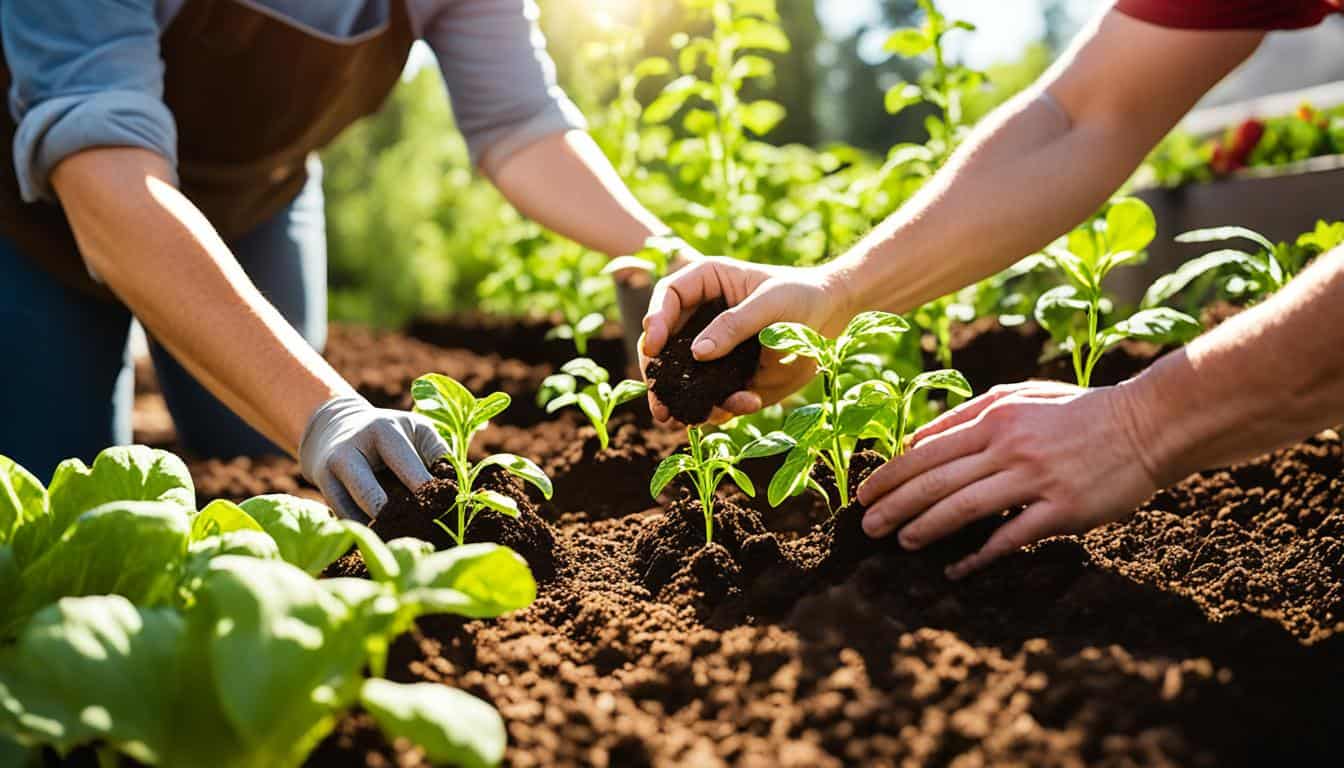
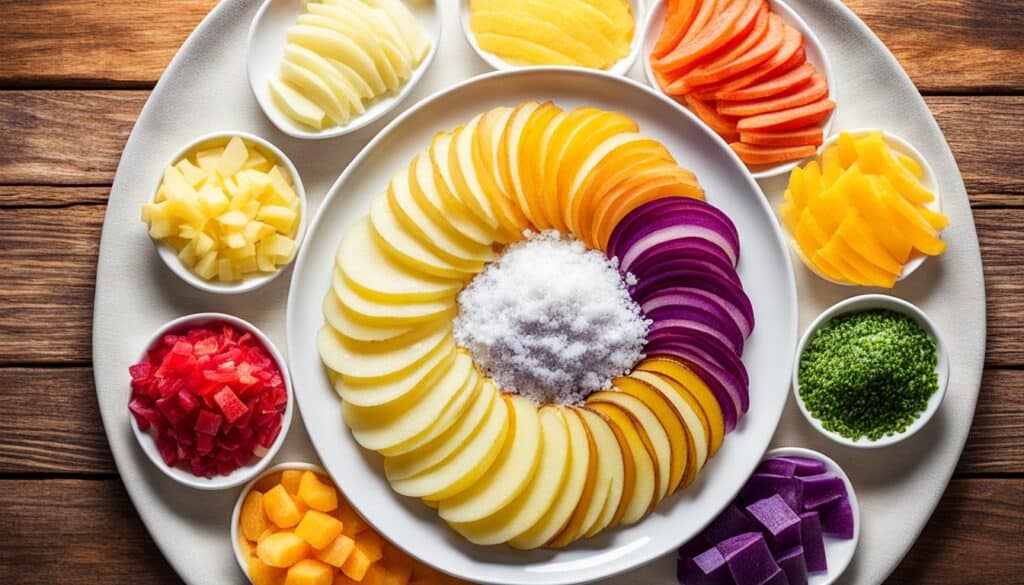
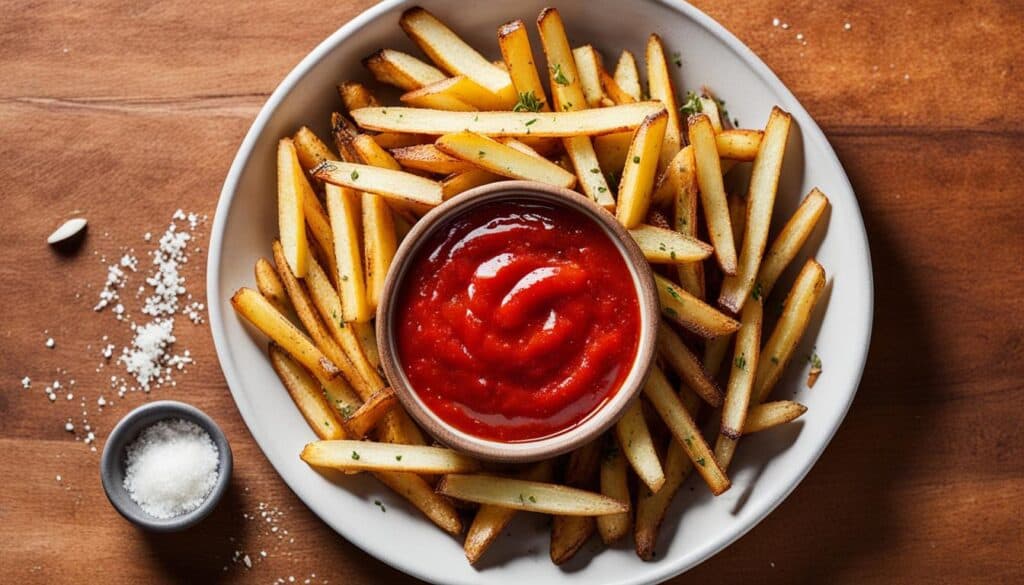
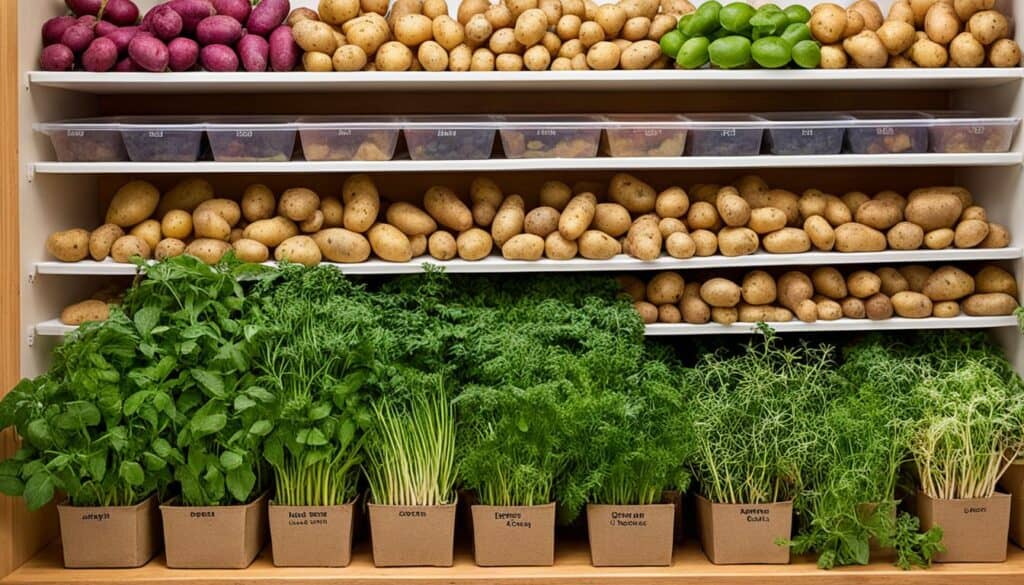
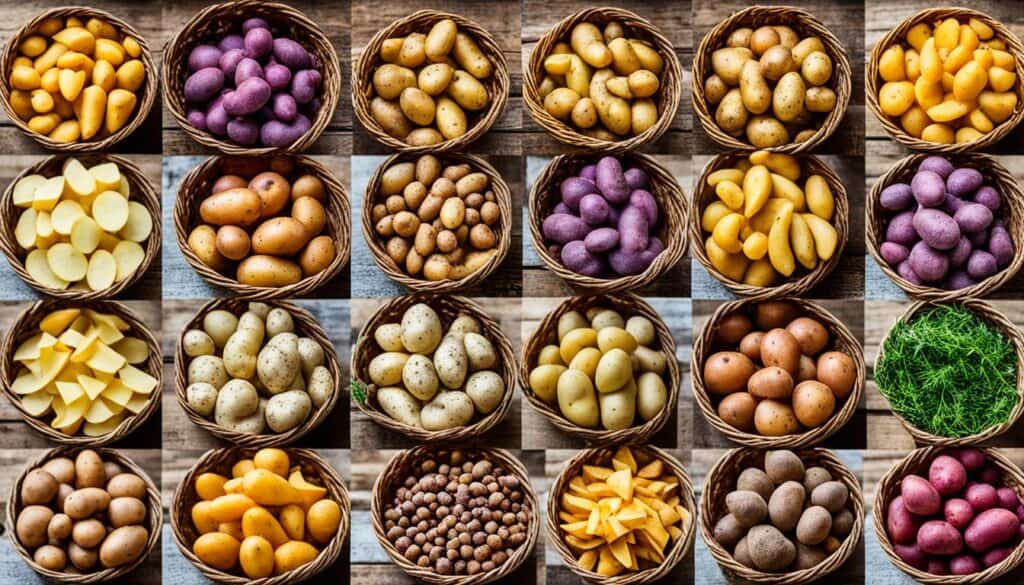
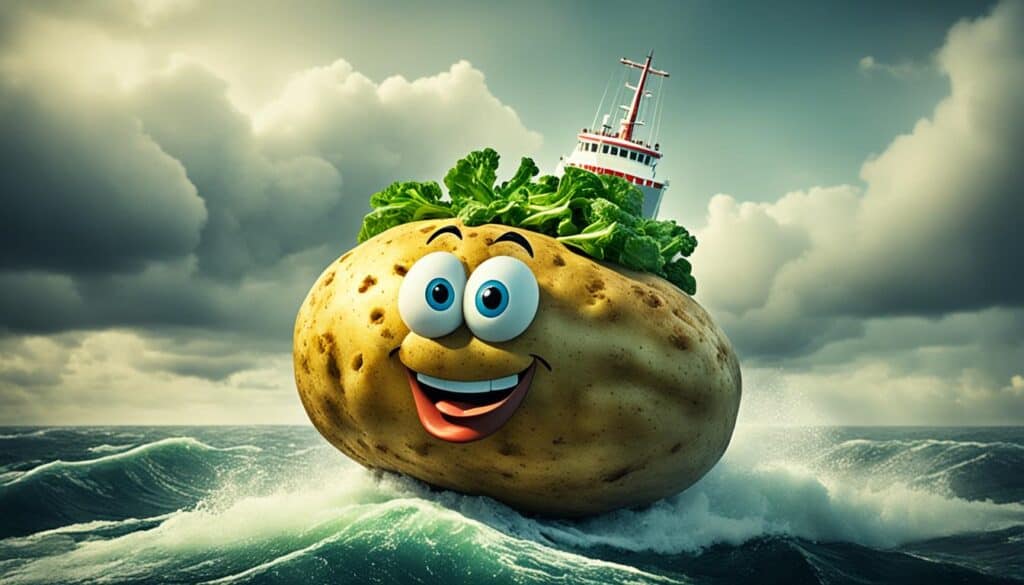



Leave a Reply